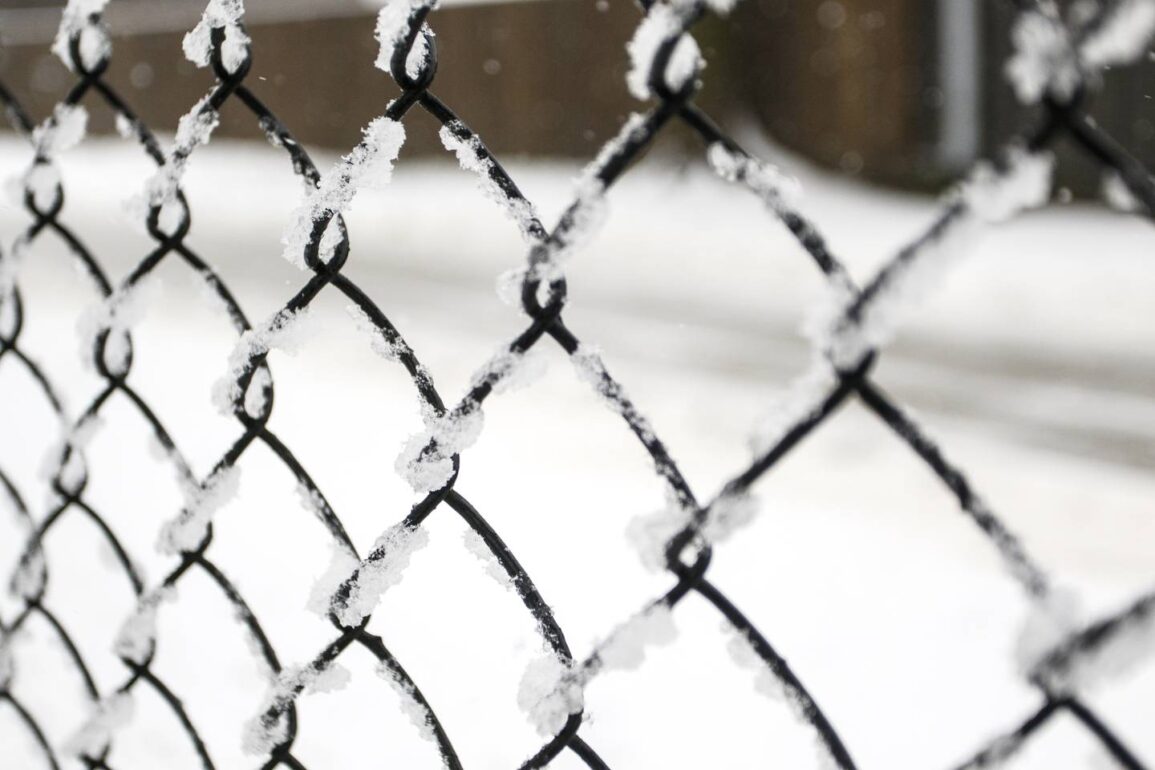
Rhonda Klak slipped on four pairs of socks — two pairs on her feet and another two over her hands — before falling asleep. This is how she kept warm in the winter of her year-long sentence at Lucile Plane State Jail, which was equally as brutal as summer due to the lack of heating inside the facility, Klak said.
Incarcerated people all over the US — including in Texas, Alabama, California, Connecticut, Georgia, Oklahoma, Pennsylvania and New York — are exposed to frigid temperatures in winter months as jails and prisons fall into disrepair and some people say it’s intentional.
“In the summer months, we were begging for winter,” Klak said. “And when fall started coming we were all just so excited and relieved. But then the winter came and it was just unreal.”
Correctional officers promised all winter long to bring portable heaters to people incarcerated at the jail if temperatures dipped below 30 degrees. Klak was under the impression that this was mandated by the Texas Department of Criminal Justice but most states, including Texas, don’t actually require correctional facilities to regulate temperatures.
“Well, the temperatures did get below and they never brought them,” Klak said. “The whole time I was there, I never saw one.”
A winter storm knocked out power all through Texas in 2021, sending temperatures in prisons and jails plunging below zero. Thousands of incarcerated people were packed in facilities without water and electricity for days. Toilets inside several jails overflowed, flooding the housing units and exacerbating unsanitary conditions. Reports of incarcerated people being exposed to the elements due to the aging infrastructure in some facilities — holes in walls and cracked and unsealed windows — emerged over the days-long power outage. Personnel confiscated blankets amid the outage and many people who were incarcerated at the time were made to sleep on the floor in freezing temperatures.
“Every single winter, the freezing cold [in U.S. jails and prisons] becomes unbearable and deadly. Every year, it’s a crisis. Every year, people in power do nothing to change things. It’s deliberate indifference.” civil rights attorney Scott Hechinger wrote in a statement to Reckon.
Hechinger served as a Brooklyn public defender for over a decade before founding Zealous, a non-profit aimed at educating the public about inequities in the justice system. In social media posts, Hechinger lays out the frigid reality of incarceration in New York: those who are incarcerated shivering underneath the sole blanket they’re provided during the intake process.
“Whatever is happening on the outside, whatever larger society is dealing with is magnified inside prisons, jails and detention centers,” Zealous director of media and advocacy Olayemi Olurin said. Olurin also used to be a public defender, representing countless Rikers Island detainees. All of them, she said, had at least one story to tell about the frigid temperatures inside Rikers facilities.
The cold is exacerbated by the jails’ “antiquated” infrastructure, the floors literally rotting and crumbling beneath people as they sleep. Jails on Rikers Island are old and rundown. And, like a lot of America’s jails and prisons, they predate the booming for-profit prison industry that drives up prison and jail populations putting strains on critical resources, and the worsening climate crisis fueling more unpredictable extreme weather.
Rikers’ oldest facilities date back to the 1930s. Over decades, the heating and ventilation systems have deteriorated, leading to routine heating malfunctions and sometimes full blown outages. Efforts to repair the broken systems are months behind schedule, according to a New York Department of Corrections and Community Supervision (DOCCS) report, due to the level of disrepair. Newer facilities, intended to house people temporarily, are no more than makeshift trailers. These problems persist despite DOCCS’s billion dollar annual budgets.
“It’s not a matter of agencies not knowing about these conditions or their obligations to fix them,” Olurin said. “The reason why there’s no action when conditions that incarcerated people face come to light is because we’ve been conditioned to believe people who find themselves in the criminal system are bad people who deserve to be punished,” Olurin said.
Senior government affairs officer at the Bard Prison Initiative Dyjuan Tatro agrees. The organization provides college education to people behind bars.
“When we design prisons, just like homes, schools, hospitals, we make choices,” Tatro said. “These spaces have not been designed to be comfortable, much less humane, because in America prison is intended to be punitive.”
Tatro is formerly incarcerated and recalls harsh winters in Eastern Correctional Facility, one of the oldest maximum security prisons in New York. Heating in the housing units was inconsistent, with those housed on the upper tiers facing the brunt of the cold with no heat at all. One November there was no hot water in Tatro’s cellblock, and he was forced to take cold showers before returning to his freezing housing unit.
Dyjuan said heat from other parts of the jail, areas and places where correctional staff work and congregate, seldom reached the housing units. Those areas, known as auxiliary areas in the jail planning and design world, are commonly placed far away from the spaces occupied by people who are incarcerated, isolating and depriving them of basic necessities almost as if by design.
“We could add heating systems, we could build in hot water systems and AC,” Tatro said. “It would be the humane thing to do, but it wouldn’t make imprisonment right. Still, the choice not to do so is one of cruelty.”
This post was originally published on this site be sure to check out more of their content.









